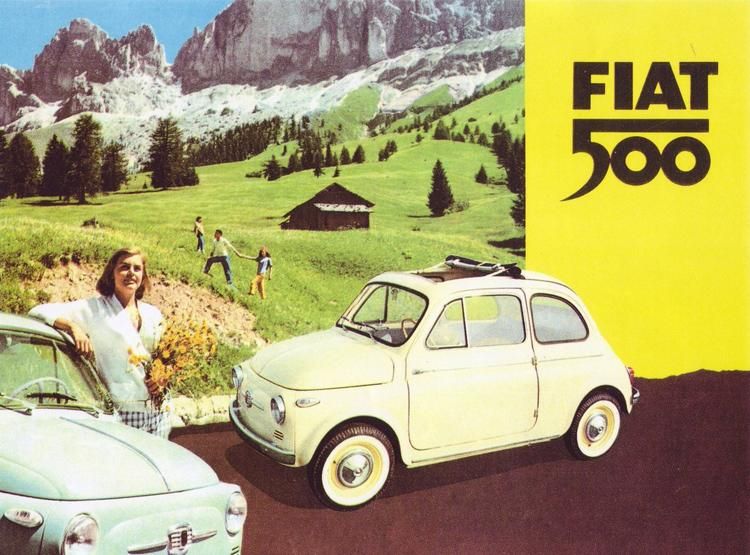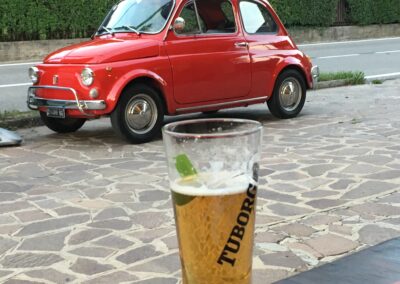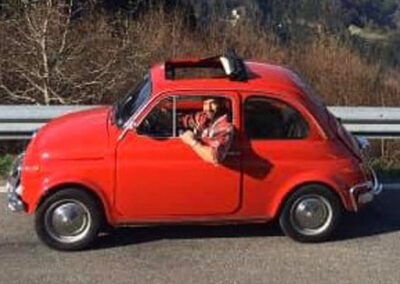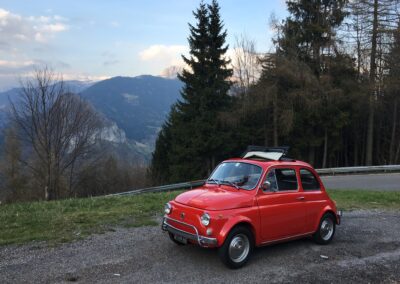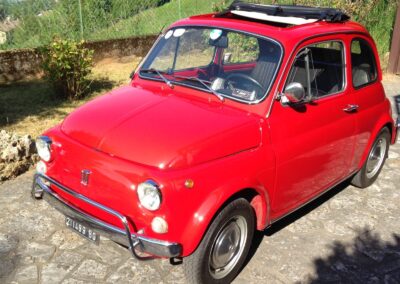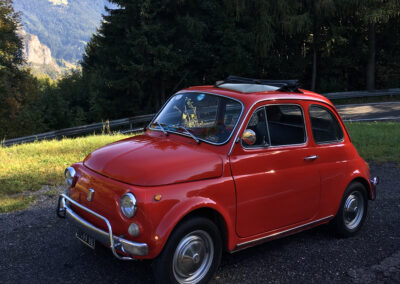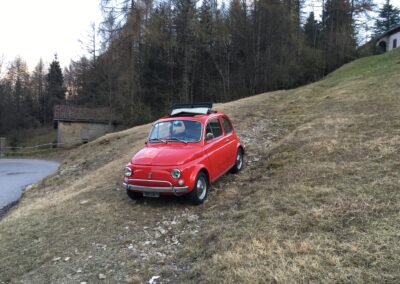
A Much-Loved Italian Design Icon
Designed in Italy as a post-war economy car; the 500 offered far more character and charm than its contemporaries. Its cheeky styling and big sunroof make the classic Fiat 500 a perfect around-town runabout on a pleasant day. With over 4 million sold over its 18 year production span, the Fiat 500 evolved remarkably between 1957 and 1975, cementing its status as a true European classic car.
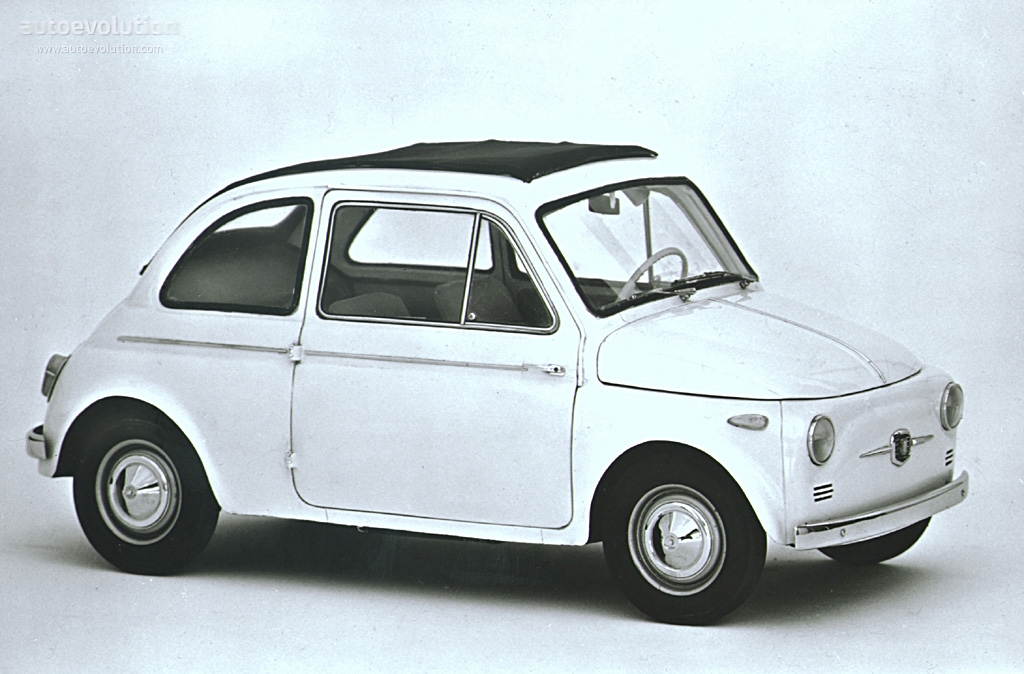
1957-1960
FIAT 500 NUOVA
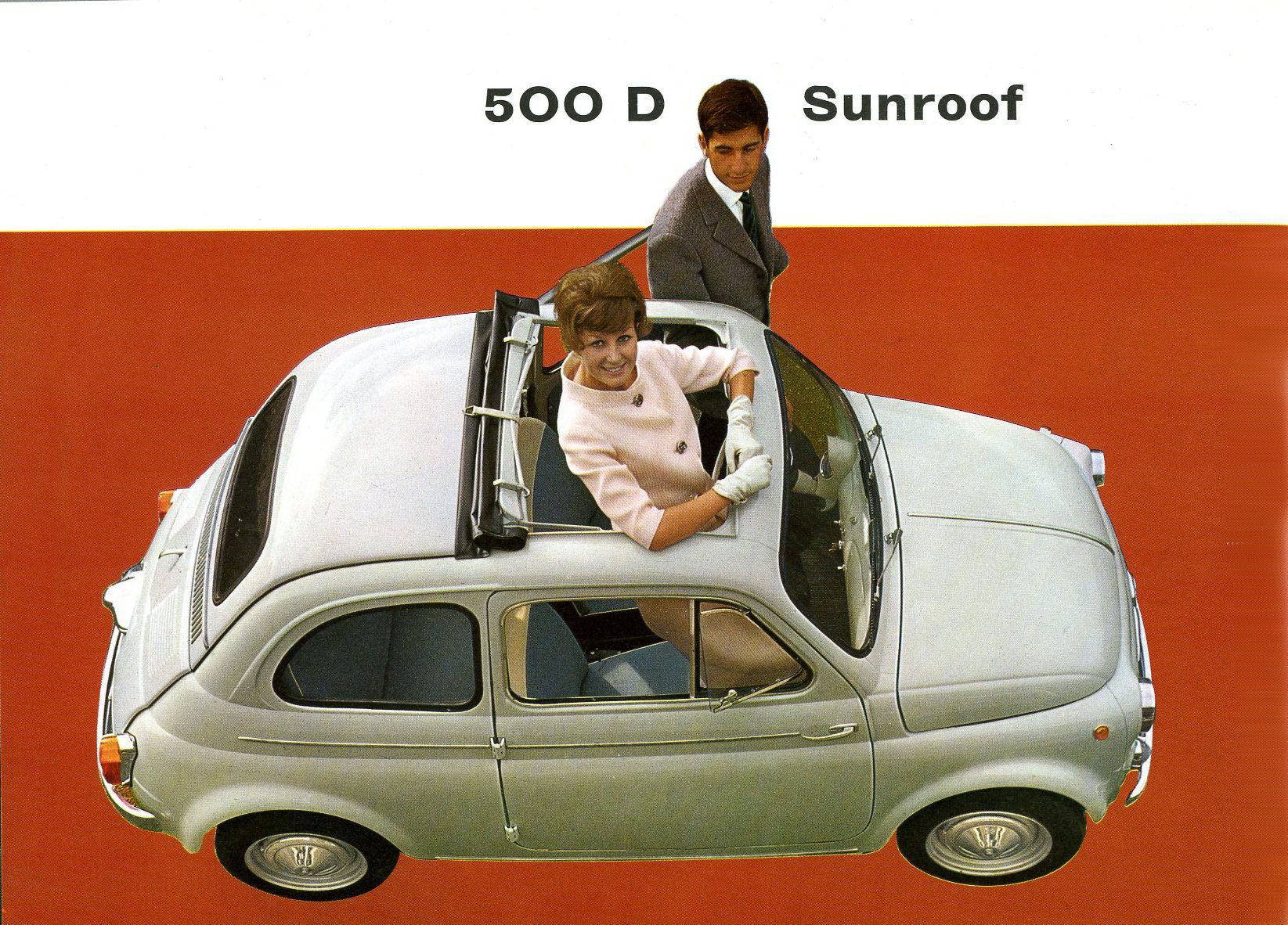
1960-1969
FIAT 500 MODEL D
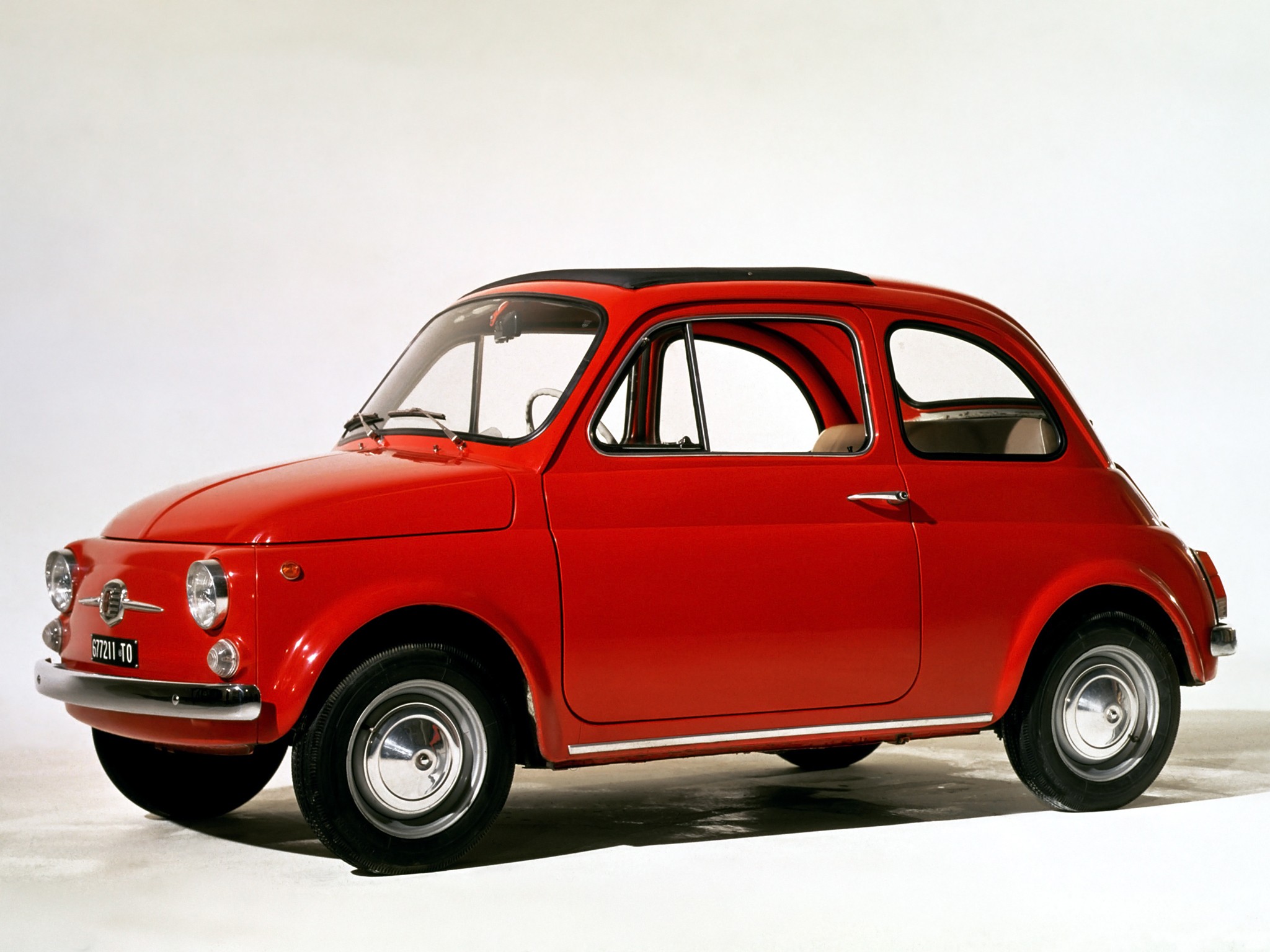
1965-1972
FIAT 500 F/BERLINA
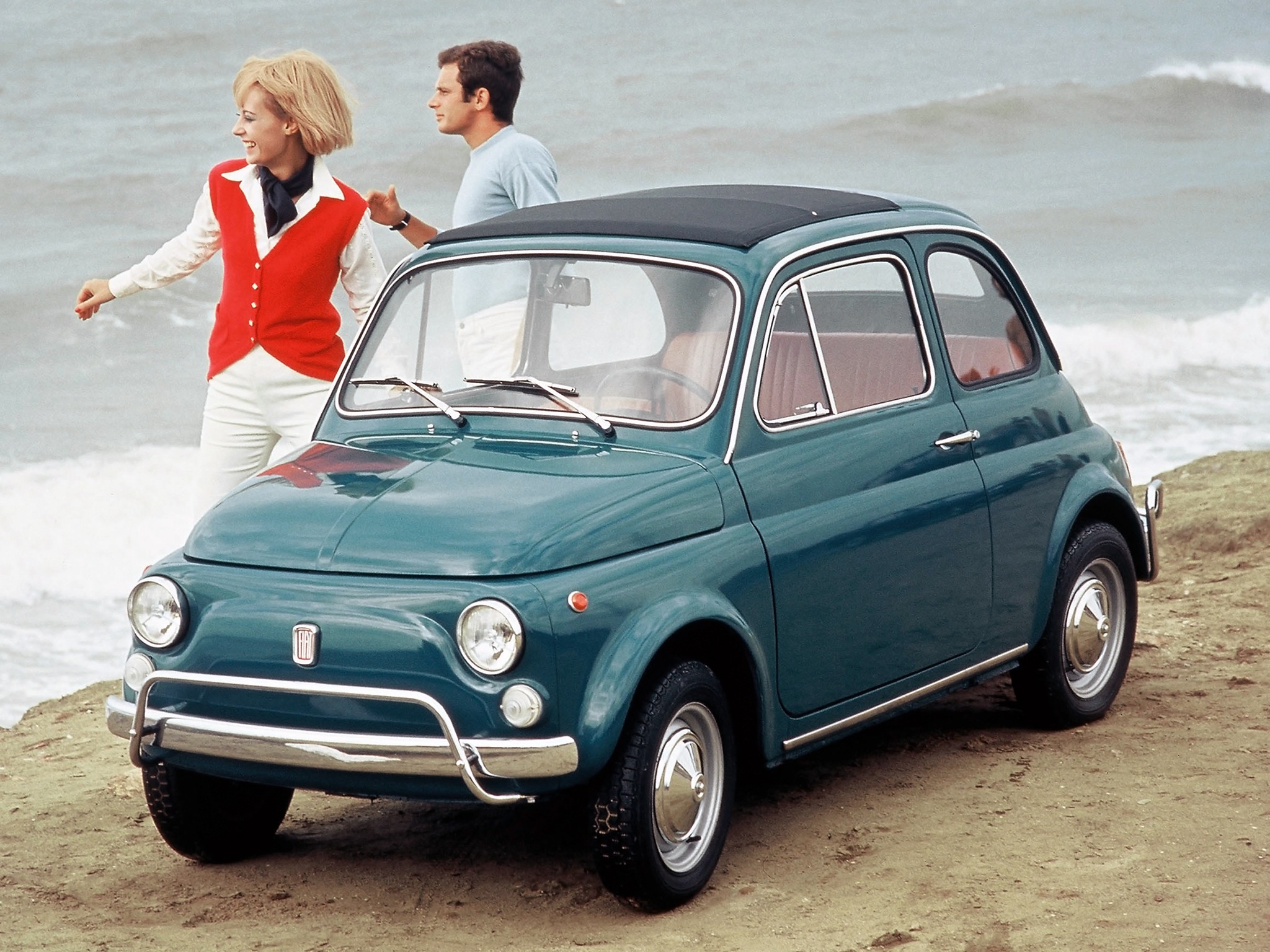
1968-1972
FIAT 500 L/LUSSO
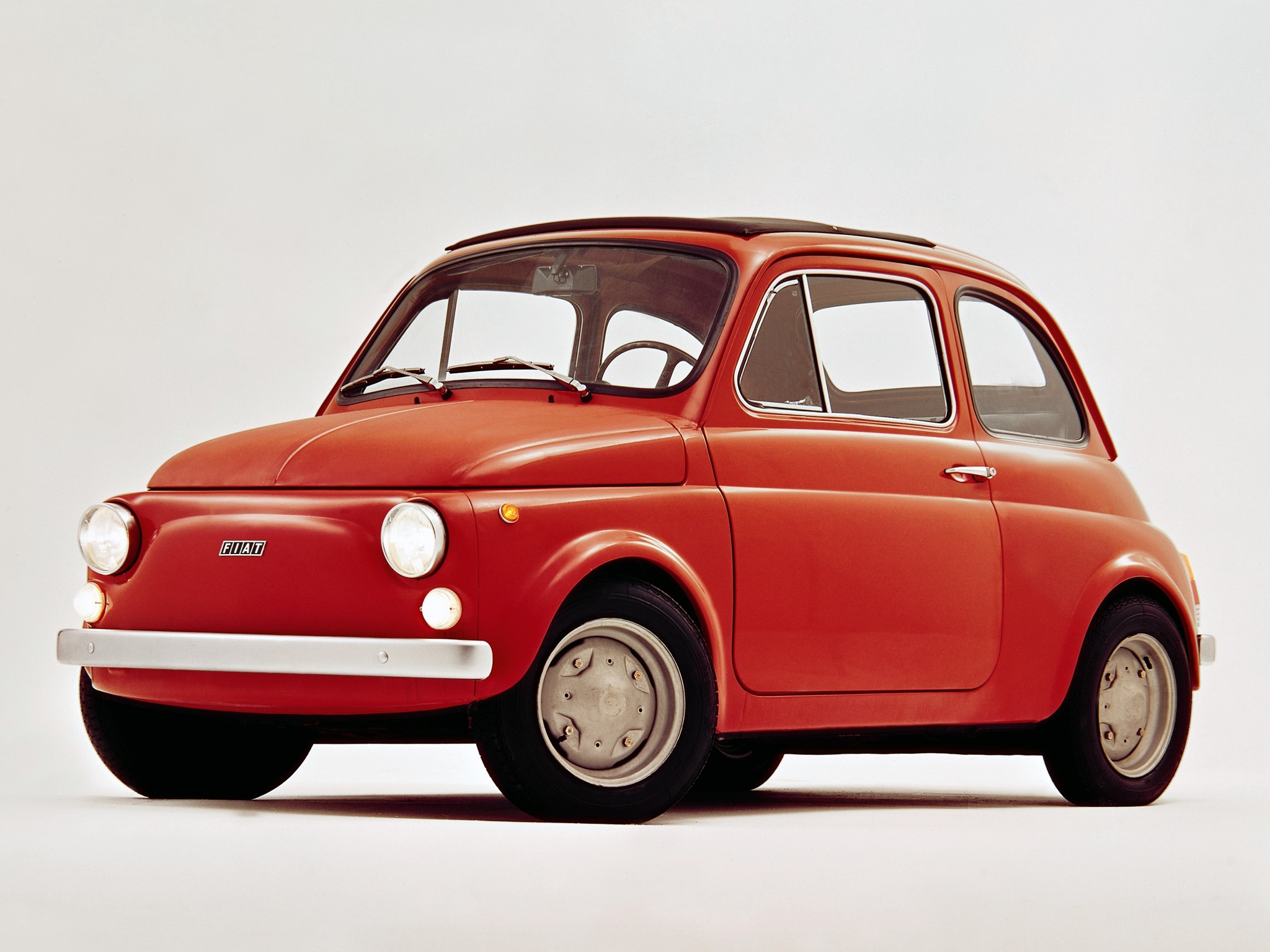
1972-1975
FIAT 500 R/RINNOVATA

The 1969 Fiat 500 L
The Fiat we have here is an L … The extra letter in the name of the Fiat 500 L stands for ‘Lusso’, which was the penultimate model in the series. The changes featured in this car were mostly cosmetic and almost all concentrated on the interior of the car. The dashboard was redrawn entirely giving it a more modern look, a change that was long overdue because the 500 was beginning to show its age. This change also made the car more comfortable and more stylish.
A Stylish Car for the Masses
The classic Fiat 500 is no longer a car. It’s an icon of the European automotive industry, the car that helped Italy grow more than six decades ago.
Designed by Dante Giacosa and launched in July 1957, the NUOVA 500 evolved to replace the 500 TOPOLINO. This earlier Fiat had motorized post-war Italy; now the tiny NUOVA 500, created for use in the narrow city streets, quickly earned its nickname “the people’s car”. Measuring just over 2.5 metres long (9 feet) and powered by a 479 cc two-cylinder, air-cooled engine, it was considered to be the first true city car for the Italian driving population.
The Nuova was the first ever Fiat 500 released and the one with the smallest engine, a unit of 479 cc that was capable of just 13 hp. Just like the Citroen 2CV, it had a folding roof. Later models would modify this folding to only half the distance – just over the driver’s head. The Nuova launched the trend of the “suicide doors”, a feature present on only two other 500 models. There was also a more stylish Sport version, coming with a nice red stripe and a more powerful engine.
There is so much history to this car – so many clubs and activities take place all across the world for this little icon that saw 4 million units produced.
Get in touch with us for detailed restoration guides, what to look for when inspecting a vintage Fiat 500, where the weakest points of the 500 are hiding, and which series is best for you.
I also recommend you check out the world’s biggest Fiat 500 Club and my favourite guidebook to restoring your Fiat 500.
How we met
The usual story of a boy obsessed with something that’s not for sale. Boy harrasses the owner with persistent and constant questions about the car, owner eventually sells the car in order to get a rid of the boy. The year was 1987.
Read more about how I fell in love with my Fiat 500 in My Story!



